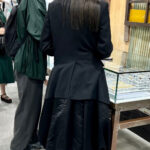The 1960s was a decade of profound cultural shifts, and at the heart of this revolution was music, particularly rock and roll. Emerging from this vibrant scene was a distinctive fashion aesthetic, deeply intertwined with the psychedelic rock movement. “Rock Fashion” of this era wasn’t just clothing; it was a powerful form of self-expression, mirroring the era’s passion for creativity, social change, and altered states of consciousness. San Francisco’s Haight-Ashbury district became the epicenter of this movement, a melting pot where young people converged to challenge societal norms and explore alternative lifestyles, all fueled by the pulsating rhythms of rock music.
Rock concerts of the 1960s were immersive experiences, blending music with liquid light shows and film projections. This sensory overload profoundly influenced fashion trends. To capture the essence of these experiences, fashion designers and enthusiasts adopted a visual language as vibrant and unconventional as the music itself. They drew inspiration from diverse historical styles, including Art Nouveau with its flowing lines, the ruggedness of Wild West attire, and the intricate details of Victorian engraving. These elements were reimagined with bold, vibrating colors, inventive lettering, and designs that were both witty and provocative, creating a unique style that screamed rebellion and individuality.
Fashion in the 1960s psychedelic rock scene was eclectic and diverse. It wasn’t about adhering to mainstream trends but rather about crafting a personal statement. Vintage styles were embraced and reinterpreted, leading to a fascinating mix of garments. Embroidered denim became a staple, adorned with peace signs, flowers, and intricate patterns, reflecting the era’s themes of peace and love. Hippie fringe, adding a sense of movement and bohemian flair, was another key element, appearing on jackets, vests, and bags. Crochet, with its handcrafted and textured appeal, was incorporated into vests, tops, and even dresses, emphasizing a return to natural and artisanal aesthetics. Velvet, with its rich texture and deep colors, added a touch of luxurious bohemianism, often seen in bell-bottom pants, vests, and jackets.
The psychedelic aesthetic wasn’t confined to clothing; it permeated every aspect of visual culture, including the iconic rock posters of the time. These posters, designed to promote concerts, became works of art in themselves, visually translating the sonic experience of psychedelic rock. The swirling colors, distorted typography, and hallucinatory imagery of these posters directly influenced fashion trends. Just as poster artists sought to visually represent the altered states of consciousness induced by psychedelic experiences, rock fashion aimed to embody this spirit of freedom and exploration through clothing.
Rock fashion in the 1960s was more than just a style; it was a cultural phenomenon. It was a visual manifestation of the era’s counter-culture movement, reflecting a desire for freedom, peace, love, and individual expression. This fashion continues to inspire designers and influence contemporary trends, proving its lasting legacy as a powerful and visually striking form of self-expression. The vibrant and eclectic nature of 1960s rock fashion remains a testament to a time of artistic innovation and social revolution, forever linked to the sounds and spirit of psychedelic rock.

